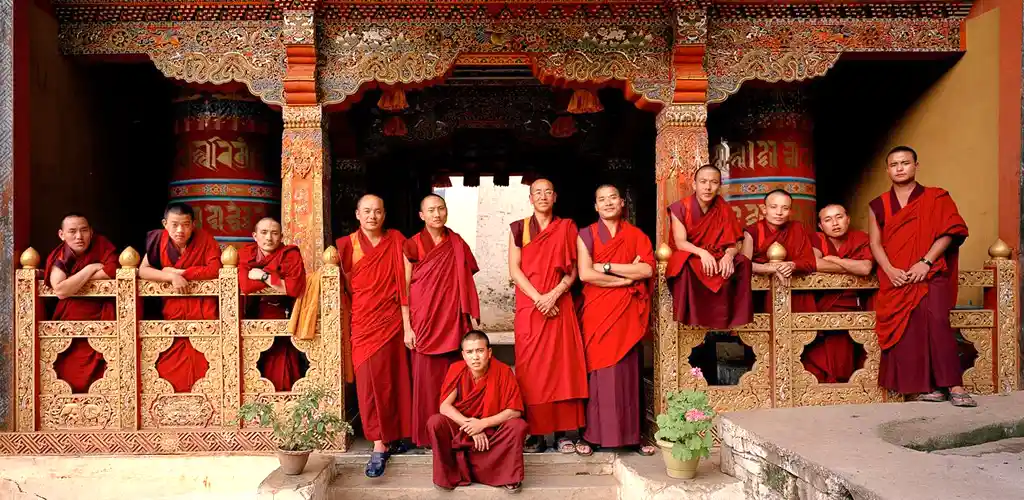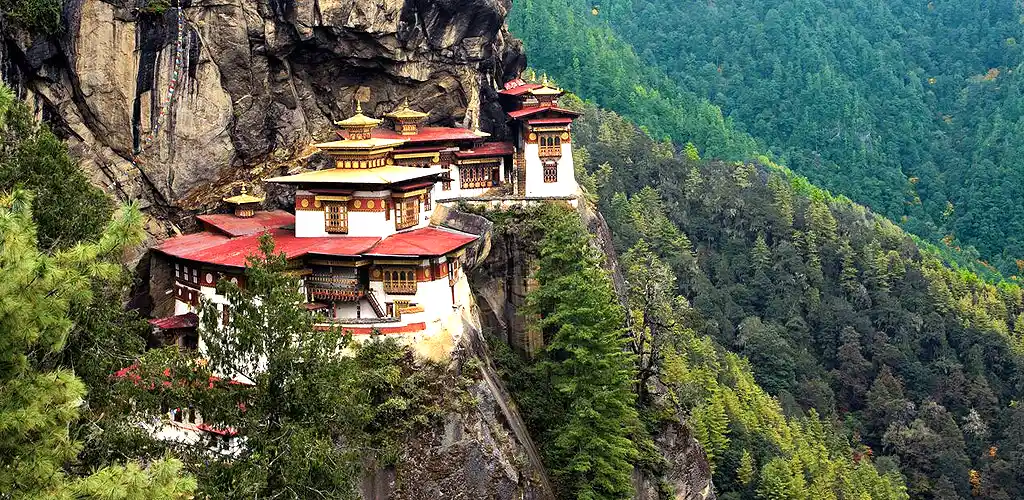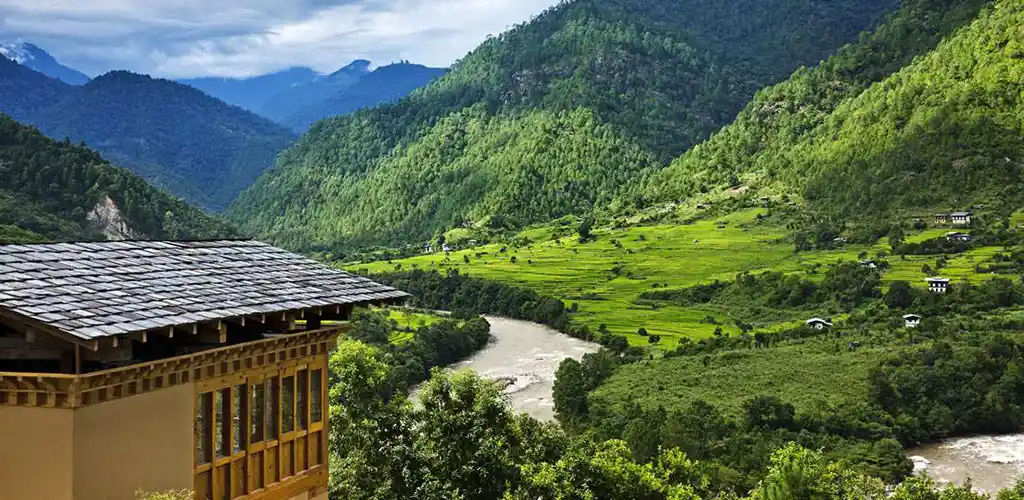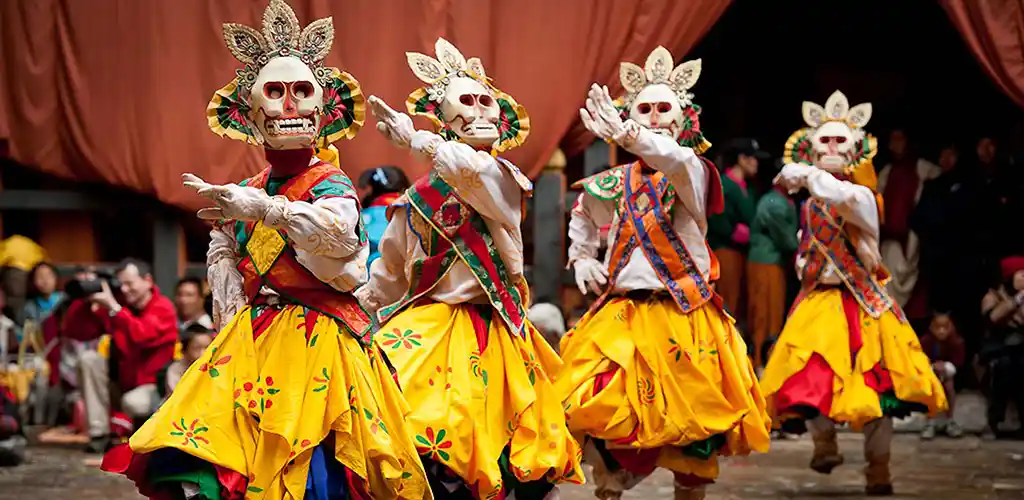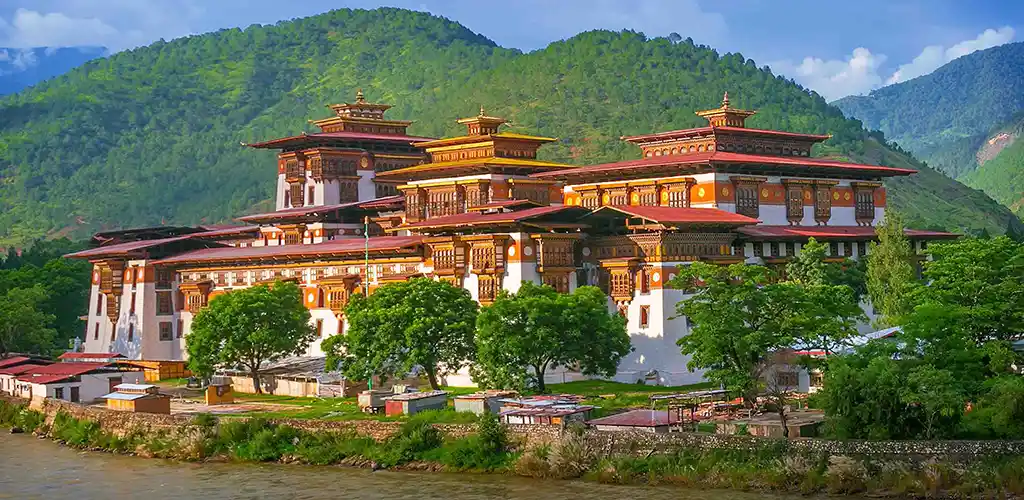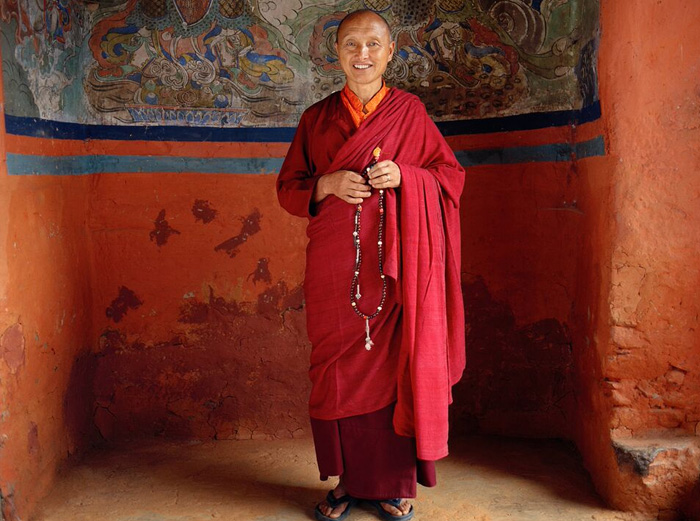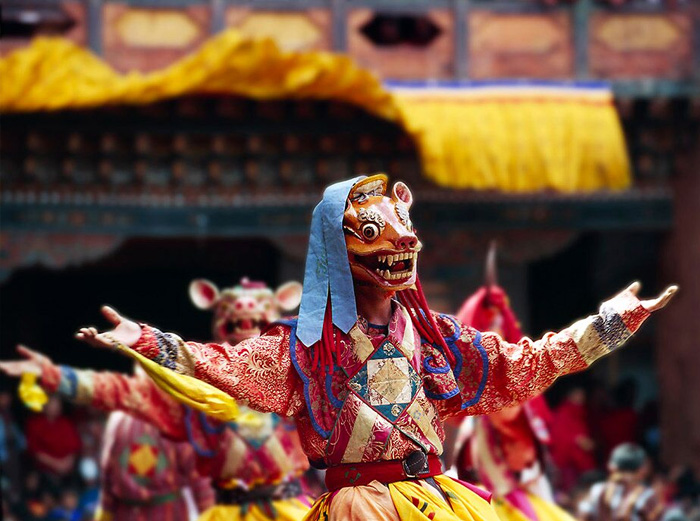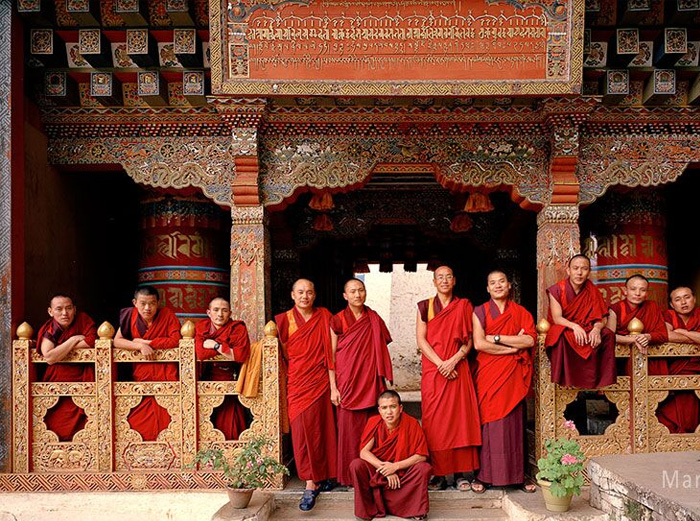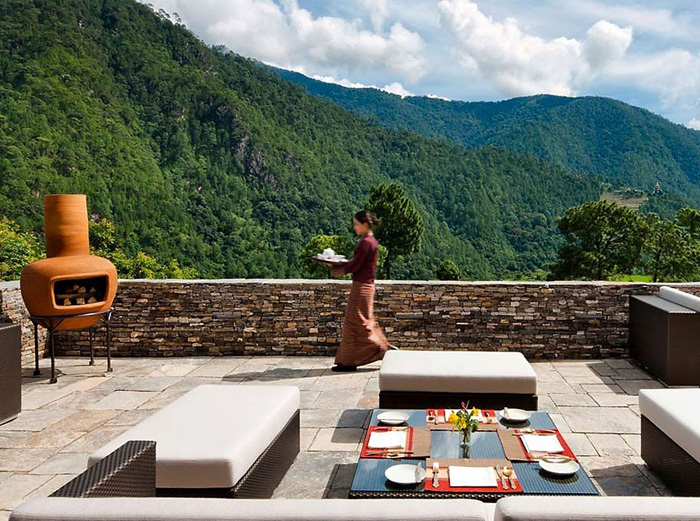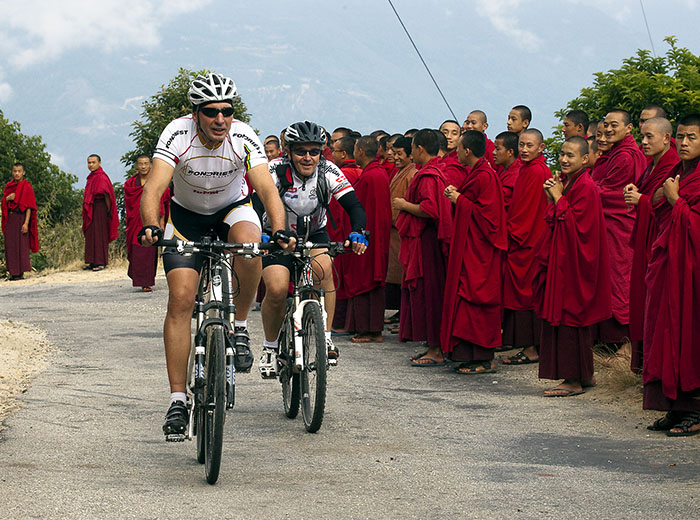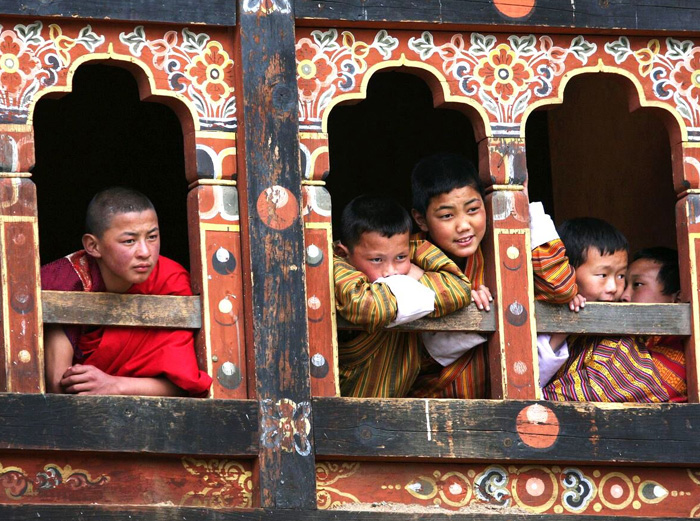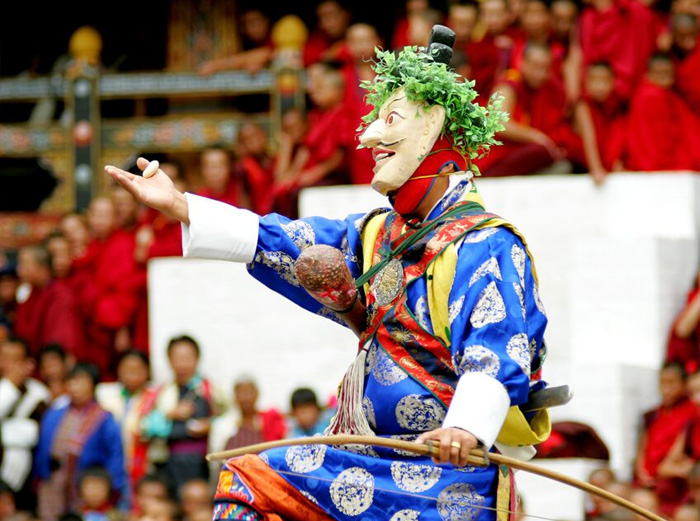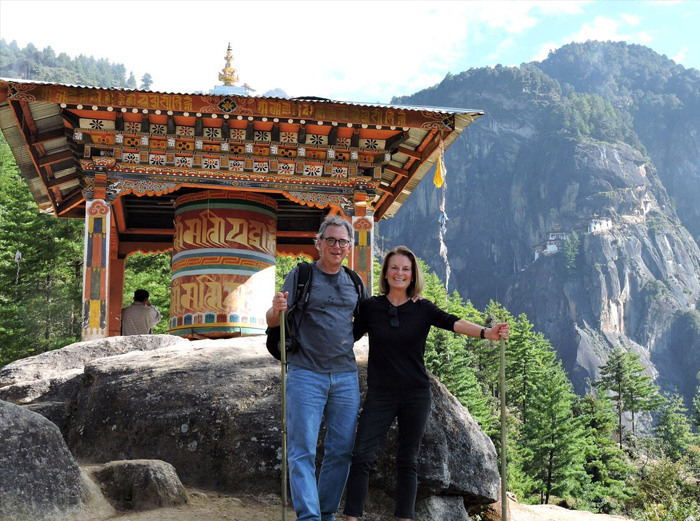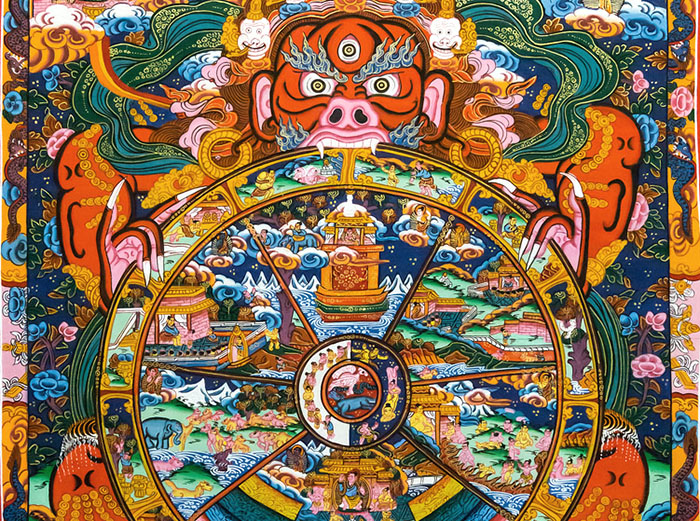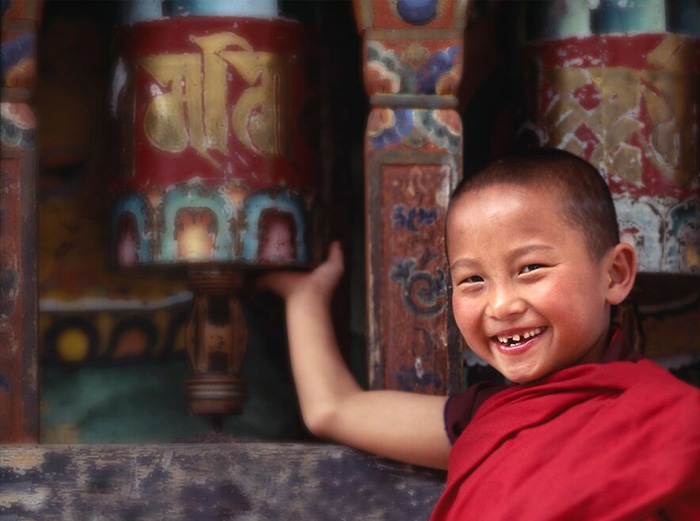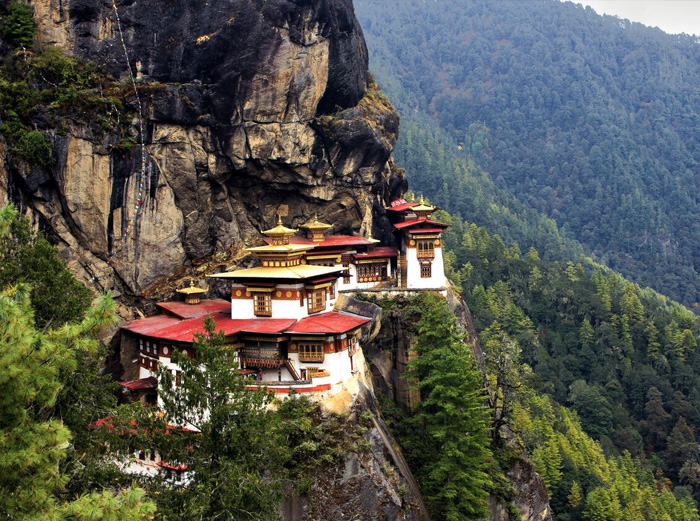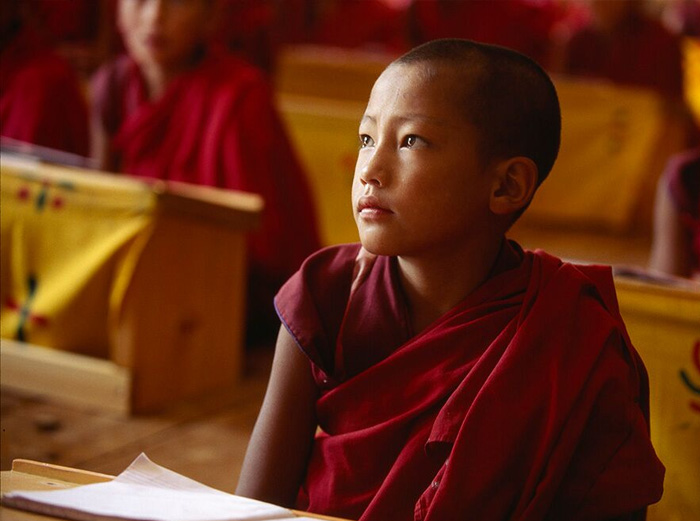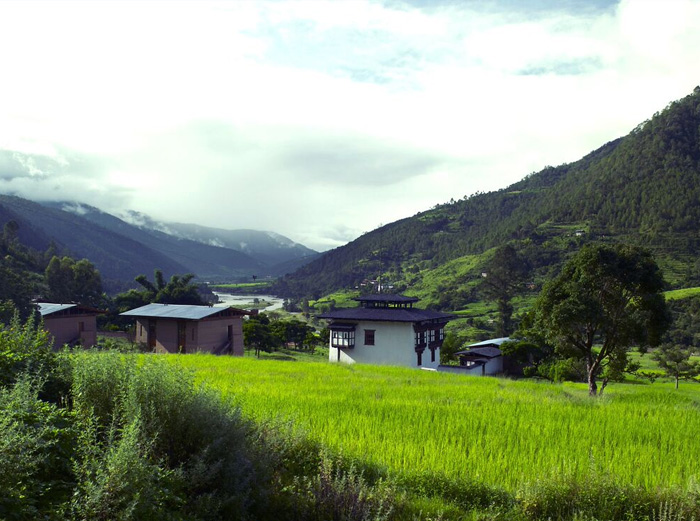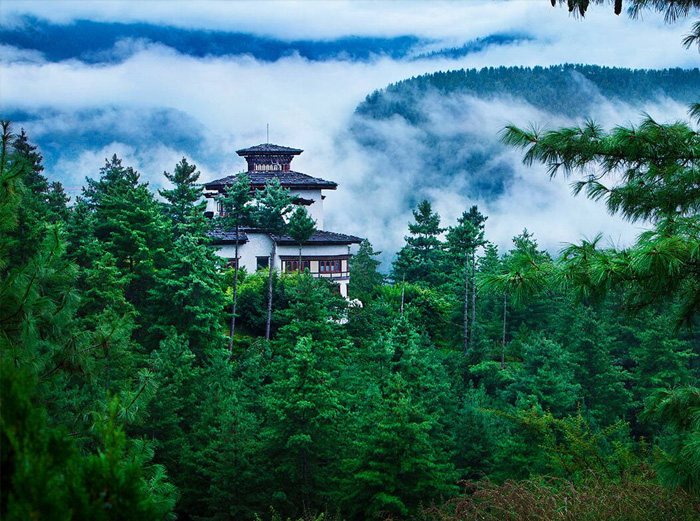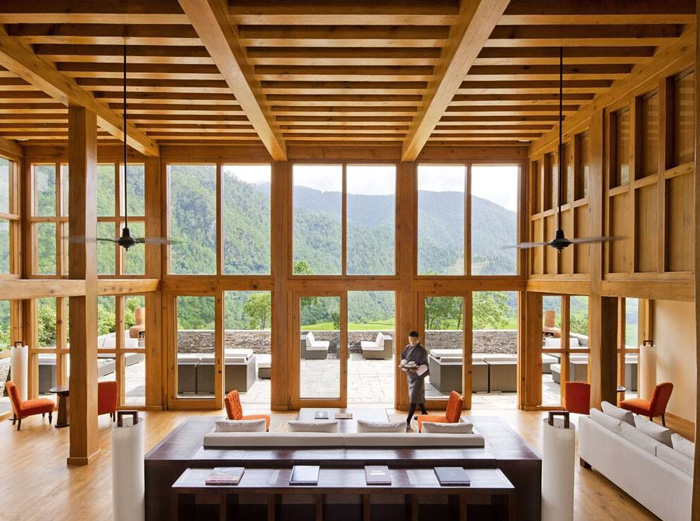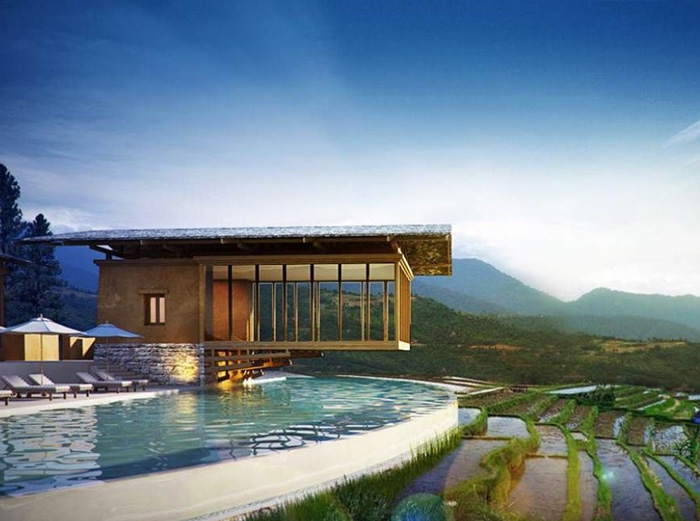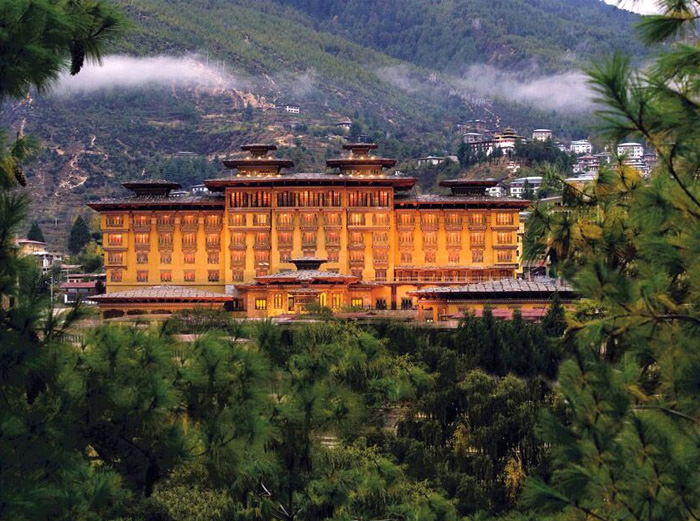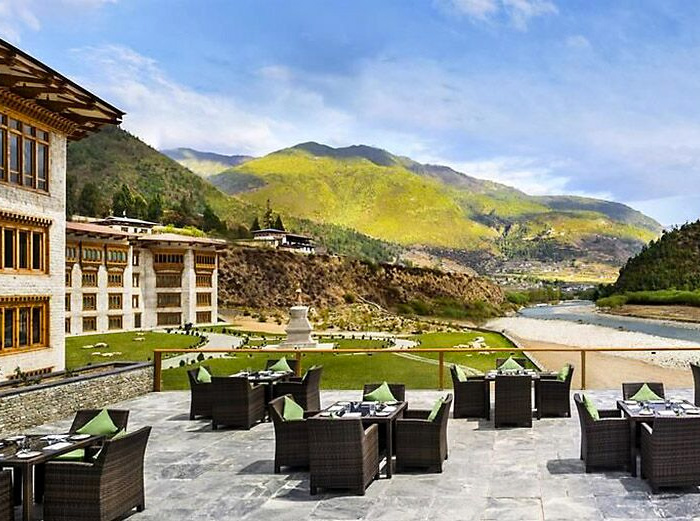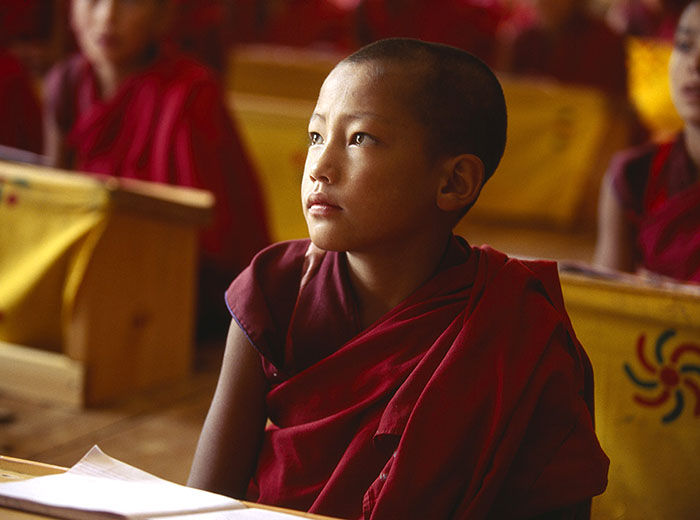Bhutan at a Glance
The last Buddhist kingdom in world that only recently peacefully transitioned from a young monarchy to a parliamentary democracy is one of the most fascinating and exclusive destinations in the world. Bhutan's sparsely-populated and unspoiled landscapes, commitment to ecology and valuing happiness in a holistic sense over economic development; and moderating the effects of modern culture influences – all make the Land of the Thunder Dragon a must-visit destination.
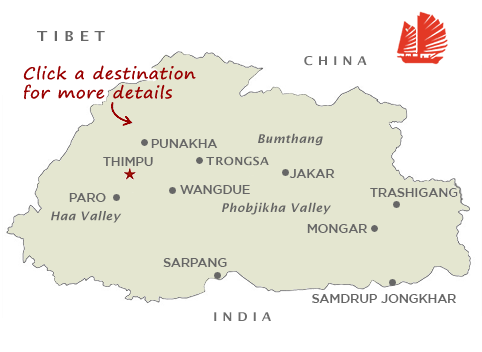
Thimpu
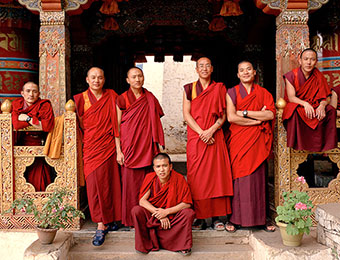
With a population just over 50,000, Thimphu is compact and like no other capital city; set in a unique valley, with distinctive architecture reflective of the harmony of tradition and Jakarmodernity.
The capital Thimphu itself sprawls up the wooded western hillside of the Wang Chhu and is the center of government, but also religion and commerce. A city with no traffic lights where police still direct traffic at intersections, yet it is the largest city in the country and seat of the government as well as the main hub of commerce. A highlight is a hike up to the Tango Monastery, a retreat built in 1688 and now serves as a university where we will have an intimate look into the daily life of a student of Buddhism.
Punakha
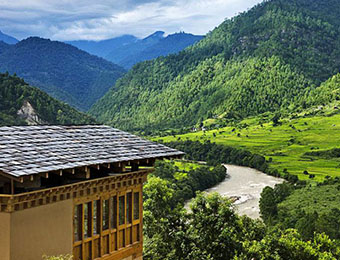
Beneath dramatic peaks,including the highest unclimbed mountain in the world, Gangkhar Puensum at 7,541 m. lies the lush Punakha Valley. Punakha, the former capital of Bhutan until 1955, is a picturesque town surrounded with snow capped Himalayan slopes and known for the iconic Punakha Dzong.
Known in ancient times as the Druk Pungthang Dechhen Phrodang or “the palace of great happiness”, the Punakha Dzong was the second dzong to be built in Bhutan. The fortress-monastery was built in 1637 by Shabdung Nawang Namgyal in a commanding position at the confluence of the Po Chhu and Mo Chhu (Father and Mother rivers). It once served as the seat of the Kingdom's government and is now the winter home of Je Khempo, the head abbot of Bhutan, along with a retinue of about 1,000 monks.
Jakar
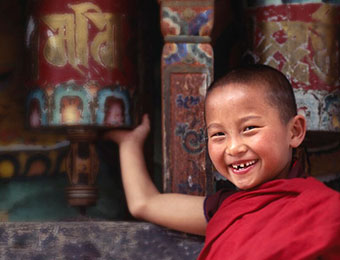
Near the far end of the Chokhor valley, Jakar, a small two-lane town of about five thousand people is nonetheless a main trading center of the region.
The sublime and picturesque setting has given it the nickname "little Switzerland." Jakar serves as a base for several days for our visits to the surrounding valleys.
Trongsa
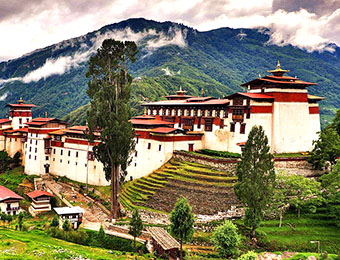
Trongsa, one of Bhutan's oldest towns (its first monastery was built in 1543). A highlight of a visit here is the magnificent dzong, which will occupy an afternoon as we photograph the the structure and spend time with resident monks. Constructed in 1644, it served as the original seat of power of the of the ruling dynasty of Bhutan.
All kings of Bhutan are first given the title of penlop (governor) of Trongsa, and the first and second kings ruled from the town. The main bazaar is situated along a striking lane of white traditional houses. It is a good place to break the journey from Thimphu to Jakar. Also worth a visit here is the Tower of Trongsa Museum and impressive Trongsa Dzong.
Wangdue
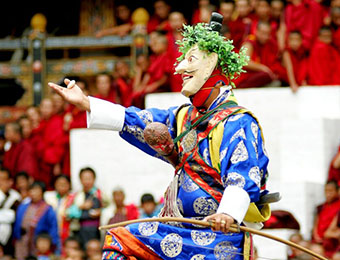
Wangdue is a district in central Bhutan and also the name of the dzong (built in 1638) which dominates the area, and the name of the small market town outside the gates of the dzong. The higher reaches of the valley provides rich pastureland for cattle. The district is also known for its fine bamboo work and its slate carvings.
Wangdue is the crossroads of most travel itineraries, including our annual Wangdue phodrang tshechu (festival), also our biking trips, and only a few hours drive to the Phobjika valley to spy the winter resting place of the rare black necked cranes.
Paro
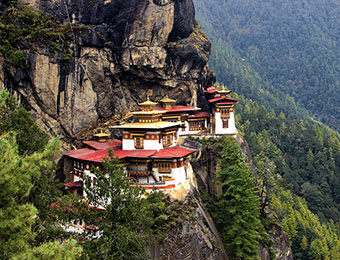
Paro is a beautiful valley encapsulating a rich local culture founded on hundreds of myths and legends, and bucolic landscapes. Mount Jumolhari (at over 7,300 meters) reigns in white glory at the northern end of the valley and its glacial waters plunge through deep gorges to form the Pa Chu (Paro River).
It is home to many of Bhutan's oldest temples and monasteries, and the National Museum. Paro has hundreds of colorful Lhakhangs and Chortens, the most important being the famed Taktsang Monastery and Kyichu Lhakhang. Paro is also one of the most fertile valleys, producing a bulk of the famous red rice from its terraced fields besides wheat, millet, potatoes, apple and seasonal vegetables. In spring, thousands gather in Paro to celebrate the Paro Tshechu, a four-day festival of mask dances and folk entertainment
Bumthang
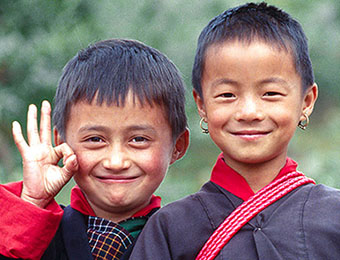
Bumthang is a general name given to combination of four valleys – Chumey, Choekhor, Tang and Ura with altitude varying from 2,600m to 4,000m. It is home to many prominent Buddhist temples and monasteries.
The four valleys that make Bumthang is the sacred heart of the country. Besides natural beauty the valley is bountifully blessed with numerous ancient temples and is the revered birthplace of many saints. It was here that the legendary saint Pema Lingpa was born, to whom the Bhutanese Royalties trace their lineage. Bumthang is also distinguished in history as the first place in Bhutan where Guru Rimpoche brought Buddhism.
Trashigang
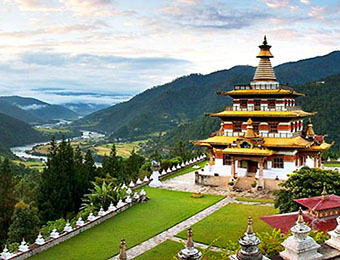
Trashigang, the largest city in Eastern Bhutan, and main trading center with India just across the border. Leaving the plains behind, our Eastern Fringes trip ascends over several mountain passes, through tropical forests of teak and bamboo, terraced fields, and through smaller rustic villages into the remote eastern areas around this high mountain town.
The area is home to a rare highland ethnic group called Dakpas, who live primarily in the twin villages of Merak and Sakteng. The 253-square-mile Sakteng Wildlife Sanctuary is near Trashigang, actually created in part to protect the migoi or as we know it, the mythical yeti. The area is home to a large variety of bird species including rufous-necked hornbill (Aceros nipalensis), Chestnut-breasted Partridge (Arborophila mandellii), and Pallas’s Fish eagle (Haliaeetus leucoruphus).Here, we will witness some raw silk weaving in the village of Radhi. Other highlights of Trashigang including the city market and massive Dzong overlooking the Gamri-chuu River.
Phobjikha

Phobjikha at an average altitude of 3,000 m is a wide and beautiful valley, designated as conservation zone within the Jigme Singye Wangchuk National Park (formerly known as Black Mountains National Park), a natural habitat for wildlife, including nesting grounds for endangered black-necked cranes that migrate from Central Asia in the winter (late October, stay until March). Gangtey is the name for hilltop village and its monastery. The valley is known as Phobjikha and falls under Wangdue Dzongkhag.
Haa Valley
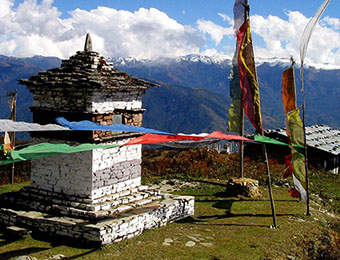
Haa is one of the most beautiful valleys in Bhutan, and also the least visited. Until 2002 Haa was closed to visitors and still less than ten percent of travelers to Bhutan make it to this picturesque place. We enjoy planning moderate to advanced biking into the valley and visting the monastery, Lhakhang Karpo (White Temple) as well as taking in the unique subculture of the yak herders and farmers of Haa who cultivate high altitude crops such as wheat, potatoes, barley and millet. The drive from Paro to Haa passes through Chele La, the highest motorable road in Bhutan at 3,988 meters and providing spectacular views.
BEST TIME TO GO
April-May, Sept-Nov
NEED TO KNOW
Visa Required
COMBINE WITH
Myanmar - India
VIEW ALL NOTES
All Departure Notes
Custom Tours in Bhutan
Unique Experiences in Bhutan
Luxury Hotels in Bhutan
We couldn't agree more and travel to the world's most exceptional and unique tourist destination should likewise include exemplary planning. Indochina Travel has organized private travel to the reclusive "Dragon Kingdom" for over a decade, with trips cultural explorations, photography, family travel, religious studies and meditation, and of course enchanting festivals featuring whirling dancers in masks and colorful costumes. We have also organized leisurely to rigorous cycling in Bhutan for over ten years through our adventure wing, VeloAsia. Cycling days are often blended with hiking days for an active trip.
In country, few people are more qualified to help visitors reveal the closely-guarded secrets of Bhutan than Sonam Dorjee. Columbia graduate Sonam has been hosting travelers the stunning and enigmatic Himalayan kingdom since 1992, soon after the government first opened its doors to travelers. Today, he is an adviser to the Department of Tourism and is widely regarded as one of the country's most experienced and knowledgeable tourism professionals. He is also one of the few guides in Bhutan trained in Europe for Alpine climbing. An avid student of Bhutanese sociology and a passionate photographer, Sonam has contributed to books and films documenting the diverse customs and traditions of Bhutan. Sonam also sits on the boards of the Association of Bhutanese Tour Operators and the Bhutan Thunder Motorcycle Club, which organizes spectacular charity rides to raise money for disabled people and disadvantaged communities within Bhutan.
Bhutan Tours
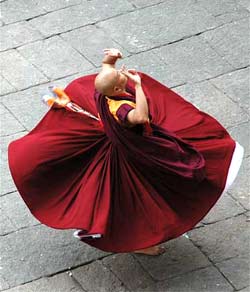
Fewer countries are more compelling visually, from the high-mountain vistas across the Himalayas, massive dzongs (temples), and colorful tsechus—Bhutan's famous annual festivals.
Join us for our one of our unique Bhutan tours designed by award-winning photographer Mark Tuschman our one of our festival trips that attend up to three major festivals during the pleasant weather of late September and early October. Our eastern trip explores Bhutan's most remote, picturesque and traditional cultures, and our Winter trip captures the Himalayas during the clearest skies of the year.
If you are interested in a custom itinerary, we do recommend planning your visit around the fascinating festivals taking place each Spring and Fall season.
Read more about our Bhutan Trips
When to visit Bhutan?
Like almost any other destination in Asia featuring monsoon-climate, weather is of paramount consideration when planning your dates. We do recommend planning your visit around the excitement of the festival season, but almost all year around outside the monsoon season provides favorable weather for travel in Bhutan. Temperatures can cool during the winter, for example, but clear skies reveal crisp views of the Himalayans. Spring brings pastures of green with wild flowers and in Autumn the country's fascinating festivals occur as well as arrival of the rare Black-necked cranes into the Phobjikha Valley.
The most popular months of the year for visiting Bhutan are during March, April and May and September, October and November. During autumn most of the large festivals occur and the weather is milder, with most days having sunny and clear blue skies, a perfect time for trekking or simply enjoying views of the Himalayan range. During summer, although there is more rainfall (about every other day) with cloudy skies obscuring the mountain views, wildlife and flora are abundant while other travelers are scarce. Although winter can be very cold, Bhutan's skies are at their clearest and mountain views at their most stunning. Summer June, July, and August is the monsoon season, but can be a paradise for the viewing the country's botanical wonders.
Bhutan Climate (Low/High Temperature | Rainfall Average | Days of Rain/Drizzle per Month)

